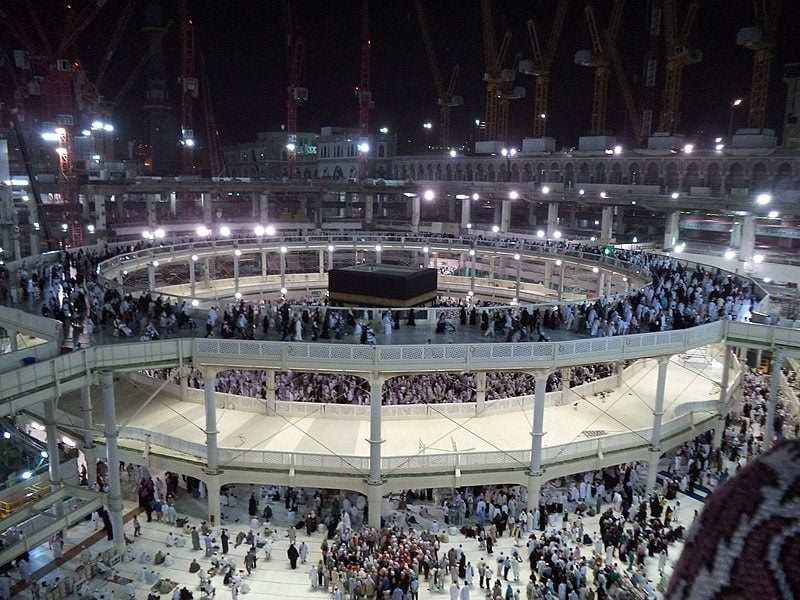Hajj is one of the most significant spiritual journeys for Muslims around the world, with millions of pilgrims flocking to Makkah each year to perform sacred rituals. As technology evolves, questions arise about the potential for virtual Hajj—a concept that would allow Muslims to experience the pilgrimage from the comfort of their homes. With advancements in virtual reality (VR), augmented reality (AR), and artificial intelligence (AI), the idea of virtual Hajj presents an intriguing future possibility. However, while the concept offers certain benefits, it also raises questions about its feasibility, limitations, and its role in maintaining the authenticity of the pilgrimage.
The Concept of Virtual Hajj
Virtual Hajj involves using technology to simulate the Hajj experience, allowing individuals to participate in the sacred rituals and visit sacred sites such as the Kaaba, Mina, and Arafat virtually. Through VR and AR technologies, pilgrims could immerse themselves in a 3D simulation that replicates the physical experience, from walking around the Kaaba during Tawaf to standing on the plains of Arafat in prayer. The technology would aim to create a faith journey that brings the essence of Hajj to people who cannot physically make the pilgrimage due to health, financial, or logistical reasons.
A Convenient Option for Those Unable to Travel
One of the most significant advantages of virtual Hajj would be accessibility. Many Muslims are unable to perform Hajj due to physical limitations, health issues, or financial constraints. In such cases, virtual Hajj could offer a meaningful alternative, enabling people to partake in a religious experience from their homes. For those with health concerns, health preparation for the physical journey can be daunting, and virtual participation would eliminate these physical barriers.
Additionally, for older adults or those with disabilities, the health preparation for travel can be particularly difficult, especially when considering the rigorous demands of the pilgrimage. A virtual Hajj would allow these individuals to participate without the risks associated with the long journey to Makkah.
Maintaining the Spiritual Significance
While virtual Hajj can replicate the physical aspects of the pilgrimage, it is essential to acknowledge that Hajj is a deeply spiritual journey. The act of traveling to Makkah, performing the rituals, and engaging with fellow Muslims worldwide is an integral part of the experience. For many, the physical journey is a transformative experience that strengthens faith, fosters a sense of community, and offers a deeper connection to God. These aspects cannot be fully replicated through technology. Pilgrim advice often emphasizes the significance of the journey itself—its hardships, its trials, and its rewards. Virtual alternatives, while useful, may lack the profound spiritual experience that comes with physically undertaking the pilgrimage.
A Complement to Traditional Hajj, Not a Replacement
Rather than replacing the traditional pilgrimage, virtual Hajj could be viewed as a supplement. It can offer those who are unable to travel an opportunity to experience some aspects of the pilgrimage and may also serve as a tool for pre-Hajj education. Pilgrims can use virtual experiences to familiarize themselves with the sacred rituals before embarking on their journey planner, ensuring they are well-prepared for the real-world pilgrimage. For instance, virtual Hajj could provide pilgrim advice on performing specific rituals like Tawaf and Sa’i, enhancing the preparation process.
Furthermore, for those planning their faithful journey, virtual tools could guide them through the logistics of Hajj, such as understanding the timing of rituals and navigating the different areas of the holy sites. It could also provide travel safety tips, helping to prepare individuals for the physical challenges they may encounter in Makkah.
The Future of Virtual Pilgrimage
While virtual Hajj is an exciting and innovative concept, it remains to be seen how widely it will be embraced by the Muslim community. The emotional and spiritual experience of performing Hajj is hard to replicate, and for many, the pilgrimage is an irreplaceable part of their religious journey. However, as technology continues to advance, it is likely that virtual Hajj will become an increasingly viable option for those who cannot undertake the physical journey, providing them with an opportunity to experience the sacred rituals in a meaningful way.
Conclusion
In conclusion, virtual Hajj offers a glimpse into the future of religious travel and could become a valuable tool for Muslims who are unable to perform the pilgrimage due to health, financial, or other reasons. It provides an immersive journey planner for pilgrims, along with health preparation and travel essentials, but it cannot fully replace the profound spiritual journey that comes with physically performing Hajj. As technology continues to evolve, the concept of virtual Hajj may continue to grow, serving as a meaningful complement to the physical pilgrimage rather than a substitute for the real-life experience. Explore more about how technology is enhancing religious experiences, and see the future of virtual pilgrimages unfold.

